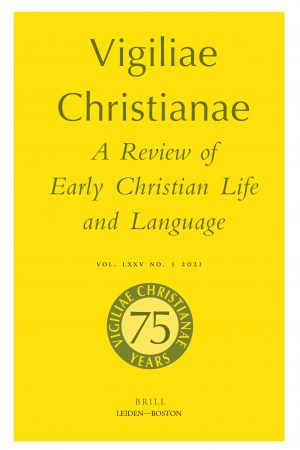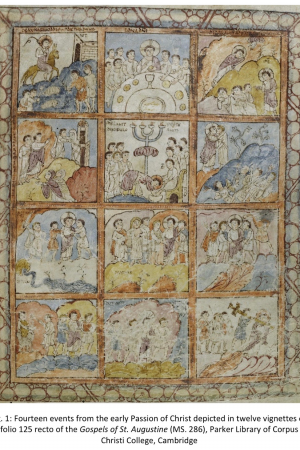
 Congratulations to Professor of Art History and Asian Studies Dr. Zsuzsanna Gulácsi on her recent publication, “A Latin Pictorial Witness to Tatian’s Diatessaron” in Vigiliae Christianae 75 in October 2021! Dr. Gulácsi examines the unsuspected Syriac Christian ties of a famous set of illustrations in a 6th-century Latin gospel book in England in the article. A sacred treasure of the Anglican Church, the book is the oldest surviving illustrated Latin gospel book and one of the oldest European books in existence. As part of her research, Dr. Gulácsi was granted permission to examine the codicology and the two surviving paintings of this parchment codex. Learn more about the book in this short video Illuminations: Treasures of the Middle Ages-St. Augustine Gospels + Archbishop of Canterbury.
Congratulations to Professor of Art History and Asian Studies Dr. Zsuzsanna Gulácsi on her recent publication, “A Latin Pictorial Witness to Tatian’s Diatessaron” in Vigiliae Christianae 75 in October 2021! Dr. Gulácsi examines the unsuspected Syriac Christian ties of a famous set of illustrations in a 6th-century Latin gospel book in England in the article. A sacred treasure of the Anglican Church, the book is the oldest surviving illustrated Latin gospel book and one of the oldest European books in existence. As part of her research, Dr. Gulácsi was granted permission to examine the codicology and the two surviving paintings of this parchment codex. Learn more about the book in this short video Illuminations: Treasures of the Middle Ages-St. Augustine Gospels + Archbishop of Canterbury.
Abstract: This study explores the content correlation of two important and well-known early gospel harmonies for the first time – a visual harmony and a textual harmony – that originated within the Roman Empire in the Latin west and the Syriac east some 400 years apart during Late Antiquity. Based on in-depth comparative analyses summarized in tables and diagrams, it identifies four distinctly diatessaronic patterns in the painting that do not accord with any one of the canonical gospels, nor any other possible combination of them, but follow instead the unique construction of the Diatessaron as documented by its Arabic Christian witness. In light of contemporaneous Latin and Syriac evidence about the liturgical rites of pedilavium and eucharist during the Holy Week, this study also contextualizes the choice of the focal vignettes in the painting.